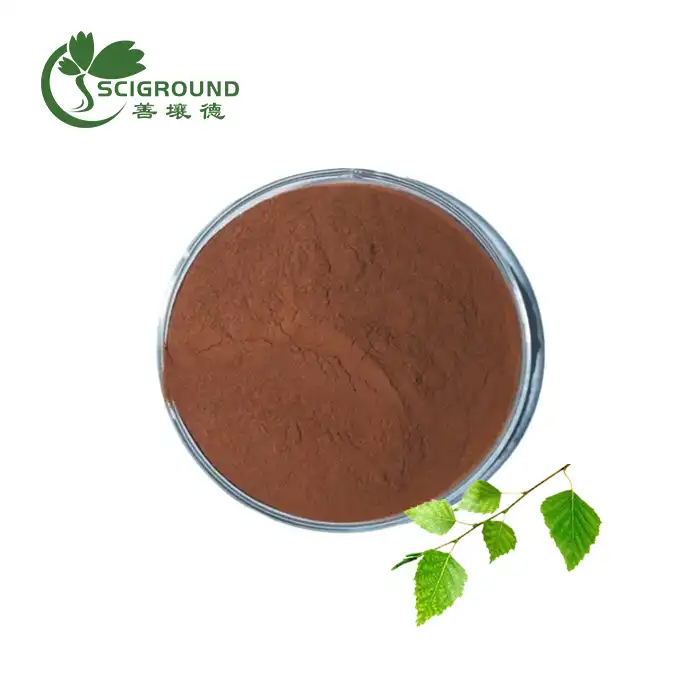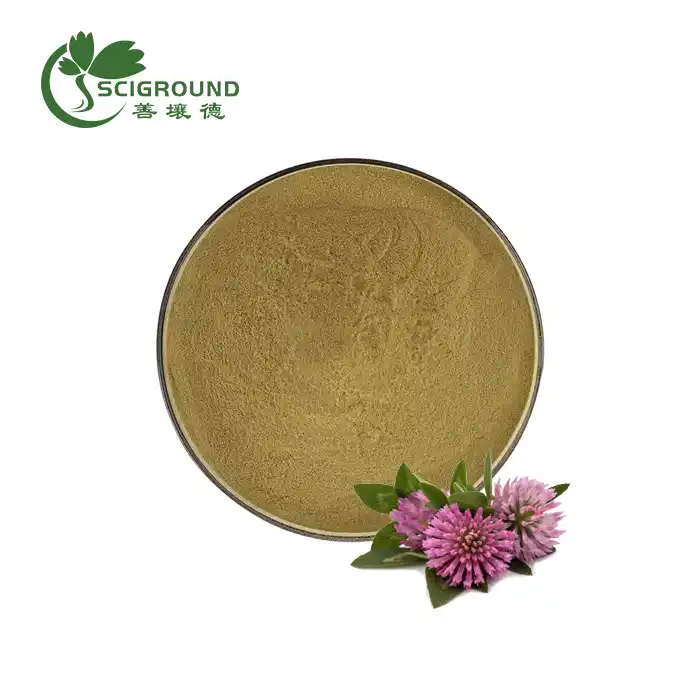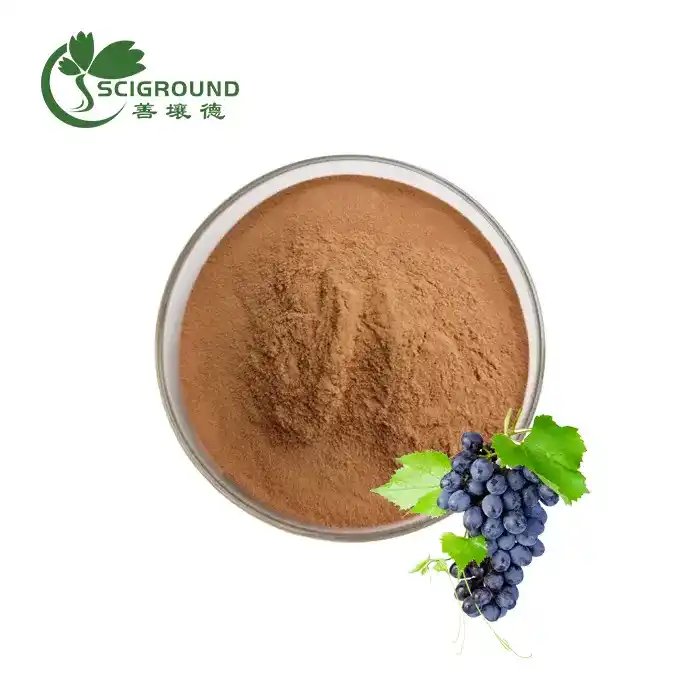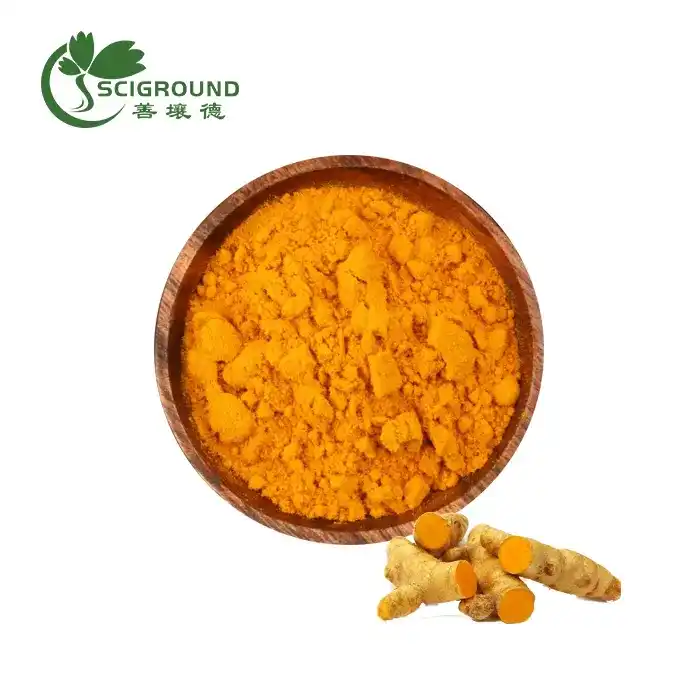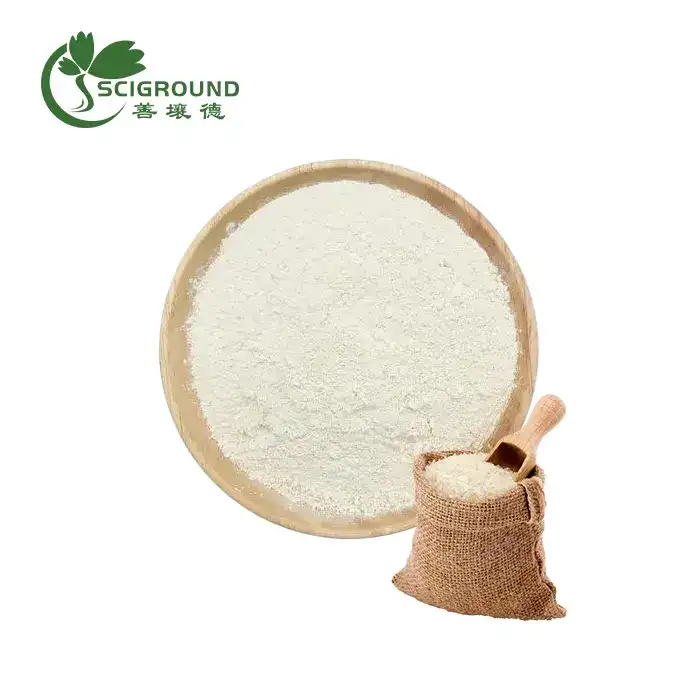What is Mogroside Monk Fruit?
Mogroside Monk Fruit, also known as lo han guo or Swingle fruit, is a small, round fruit native to southern China that has gained popularity as a natural sweetener. This remarkable fruit has been used for centuries in traditional Chinese medicine and has recently caught the attention of health-conscious consumers worldwide. Monk fruit sweeteners are derived from the fruit's extract and offer a zero-calorie alternative to sugar, making them an appealing option for those looking to reduce their sugar intake without sacrificing sweetness.
The secret behind monk fruit's intense sweetness lies in its unique compounds called mogrosides. These natural substances are incredibly potent, with some varieties being up to 250 times sweeter than table sugar. This means that only a small amount of monk fruit sweetener is needed to achieve the same level of sweetness as sugar, making it an efficient and low-calorie option for various culinary applications.
One of the most notable characteristics of mogroside monk fruit is its versatility. It can be used in a wide range of beverages and foods, including soft drinks, juices, dairy products, desserts, candies, and condiments. Moreover, monk fruit sweeteners are heat-stable, allowing them to be used in baking without losing their sweetness or breaking down under high temperatures.
As we delve deeper into the world of mogroside monk fruit, we'll explore its unique properties, how it's metabolized in the body, its potential health benefits, and practical ways to incorporate it into your diet. Whether you're looking to manage your blood sugar levels, reduce calorie intake, or simply find a natural alternative to artificial sweeteners, mogroside monk fruit offers a promising solution worth considering.
What happens to monk fruit sweeteners after consumption?
Understanding the journey of monk fruit sweeteners through the human body is crucial for appreciating their unique properties and potential health benefits. The sweetness in monk fruit comes from compounds called mogrosides, primarily mogroside V, which have a distinctive metabolic pathway compared to traditional sugars.
When consumed, mogrosides exhibit an intriguing behavior in the digestive system. Unlike simple sugars that are rapidly absorbed in the small intestine, mogrosides remain largely intact as they pass through the upper gastrointestinal tract. This characteristic is pivotal in explaining why monk fruit sweeteners do not contribute calories or affect blood sugar levels in the same way that regular sugar does.
The true transformation of mogrosides begins when they reach the colon. Here, the gut microbiota – the trillions of beneficial bacteria that reside in our intestines – play a crucial role. These microorganisms are equipped with enzymes capable of cleaving the glucose molecules from the mogrosides. This process, known as hydrolysis, releases the glucose units, which then become an energy source for the gut bacteria themselves.
After the bacterial fermentation process, the remaining mogrol (the non-sugar component of mogrosides) and its metabolites follow two primary paths:
- The majority is excreted directly from the gastrointestinal tract, never entering the bloodstream or contributing to caloric intake.
- A small portion is absorbed into the bloodstream, where it circulates briefly before being filtered out by the kidneys and excreted in urine.
This unique metabolic pathway is what allows monk fruit sweeteners to provide sweetness without the caloric load or glycemic impact of sugar. It's worth noting that some commercial monk fruit sweetener products may contain other ingredients, such as erythritol, a sugar alcohol. Erythritol has its own distinct metabolic fate – it's rapidly absorbed in the small intestine but is not metabolized by the body. Instead, approximately 80-90% of consumed erythritol is excreted unchanged in urine within 24 hours.
The metabolism of monk fruit sweeteners highlights their potential as a suitable alternative for individuals managing their weight or blood sugar levels. However, it's essential to remember that while monk fruit sweeteners don't directly contribute calories, they should still be consumed in moderation as part of a balanced diet.
How to use monk fruit sweetener?
Incorporating monk fruit sweetener into your daily routine can be a delightful way to reduce sugar intake without sacrificing the pleasure of sweet flavors. Available in both powder and liquid forms, monk fruit sweetener offers versatility in various culinary applications. Here are some innovative ways to utilize this natural sweetener:
Beverage Enhancer: One of the simplest ways to start using monk fruit sweetener is in your daily beverages. Add a few drops of liquid monk fruit sweetener or a sprinkle of the powdered form to your morning coffee, tea, or smoothies. This can help curb your sugar cravings while allowing you to enjoy your favorite drinks guilt-free.
Baking Substitute: Monk fruit sweetener shines in baking applications due to its heat stability. When substituting sugar with monk fruit in your baking recipes, it's crucial to remember that monk fruit is significantly sweeter than sugar. Start by using about 1/3 to 1/2 the amount of monk fruit sweetener as you would sugar, and adjust to taste. Keep in mind that sugar contributes to the texture and browning of baked goods, so you may need to experiment to achieve the desired results.
Breakfast Boost: Elevate your breakfast by sprinkling monk fruit sweetener over oatmeal, yogurt, or fresh fruit. This can add a touch of sweetness without the added calories, making your morning meal more satisfying and enjoyable.
Salad Dressing Creator: Create low-calorie, flavorful salad dressings by incorporating monk fruit sweetener. Mix it with vinegar, olive oil, and your favorite herbs for a delicious vinaigrette that complements any salad without the added sugar.
Dessert Decorator: Use monk fruit sweetener to create guilt-free desserts. Whip it into frosting for cupcakes, blend it into a refreshing sorbet, or use it to sweeten a mousse. The possibilities are endless for creating healthier versions of your favorite treats.
Flavor Enhancer: In savory dishes, a small amount of monk fruit sweetener can balance out flavors, especially in tomato-based sauces or tangy marinades. It can help round out the taste profile without overpowering the dish with sweetness.
When using monk fruit sweetener, it's essential to remember that its intense sweetness means a little goes a long way. Start with small amounts and adjust according to your taste preferences. Each brand of monk fruit sweetener may have different levels of sweetness and may not be a direct 1:1 replacement for sugar in all recipes.
As you experiment with monk fruit sweetener, you'll discover new and exciting ways to incorporate it into your culinary creations. Remember to read product labels carefully, as some monk fruit sweeteners may be blended with other sweeteners or bulking agents. Pure monk fruit extract will provide the most concentrated sweetness and the least additives.
By creatively using monk fruit sweetener in your daily diet, you can enjoy the sweetness you crave while potentially reducing your overall calorie and sugar intake. This can be particularly beneficial for those managing diabetes, watching their weight, or simply looking to make healthier dietary choices.
Is monk fruit safe?
The safety profile of monk fruit sweetener has been a subject of significant interest and research in recent years. As with any food additive, it's crucial to examine the evidence and understand any potential risks or benefits associated with its consumption.
One of the most reassuring aspects of monk fruit sweetener is its recognition by the U.S. Food and Drug Administration (FDA) as "Generally Recognized as Safe" (GRAS). This designation indicates that qualified experts consider the substance safe for its intended use based on scientific data and extensive history of consumption. The GRAS status provides a level of confidence in the safety of monk fruit sweetener for the general population.
Notably, monk fruit has a long history of use in traditional Chinese medicine, spanning several centuries. This historical use, combined with modern scientific scrutiny, contributes to its favorable safety profile. To date, there have been no reported significant side effects associated with the consumption of monk fruit sweetener, which is encouraging for those considering it as an alternative to sugar or artificial sweeteners.
However, it's important to note that the absence of reported side effects doesn't necessarily mean that monk fruit sweetener is entirely without potential drawbacks. As with any dietary change, individual responses can vary. Some people may experience mild digestive discomfort when first introducing any new sweetener into their diet, including monk fruit. This is typically temporary and resolves as the body adjusts.
For individuals with diabetes, monk fruit sweetener presents a particularly attractive option. Unlike sugar, monk fruit doesn't affect blood glucose levels, making it a safe choice for those managing their blood sugar. However, it's always advisable for people with diabetes or any other medical condition to consult with their healthcare provider before making significant changes to their diet, including the introduction of new sweeteners.
While monk fruit itself appears to be safe, it's crucial to be vigilant about the ingredients in commercial monk fruit sweetener products. Many brands combine monk fruit extract with other sweeteners or bulking agents to improve taste or texture. One common addition is erythritol, a sugar alcohol that can cause digestive issues like bloating or stomach discomfort in some individuals when consumed in large amounts. Recent research has also suggested a potential link between erythritol and increased risk of cardiovascular events, though more studies are needed to confirm these findings.
Despite its generally favorable safety profile, it's wise to approach monk fruit sweetener – like any sweetener – with moderation. While it can be a useful tool for reducing sugar intake, it shouldn't be seen as a magic solution for health concerns. A balanced diet rich in whole foods, fruits, vegetables, and whole grains should always be the foundation of a healthy eating pattern.
For those interested in incorporating monk fruit sweetener into their diet, it's recommended to start with small amounts and gradually increase as desired. This approach allows you to assess your individual tolerance and helps prevent any potential digestive discomfort that might occur from suddenly introducing a new substance to your diet.
In conclusion, current evidence suggests that monk fruit sweetener is safe for most people when used in moderation. Its GRAS status, long history of use, and lack of reported significant side effects provide reassurance about its safety. However, as with any dietary change, it's always best to consult with a healthcare professional, especially if you have existing health conditions or concerns. By approaching monk fruit sweetener mindfully and as part of a balanced diet, you can potentially enjoy its benefits while minimizing any potential risks.
References:
- Tey, S. L., Salleh, N. B., Henry, J., & Forde, C. G. (2017). Effects of aspartame-, monk fruit-, stevia- and sucrose-sweetened beverages on postprandial glucose, insulin and energy intake. International Journal of Obesity, 41(3), 450-457.
- Di, R., Huang, M. T., & Ho, C. T. (2011). Anti-inflammatory activities of mogrosides from Momordica grosvenori in murine macrophages and a murine ear edema model. Journal of Agricultural and Food Chemistry, 59(13), 7474-7481.
- Xu, Q., Chen, S. Y., Deng, L. D., Feng, L. P., Huang, L. Z., & Yu, R. R. (2013). Antioxidant effect of mogrosides against oxidative stress induced by palmitic acid in mouse insulinoma NIT-1 cells. Brazilian Journal of Medical and Biological Research, 46(11), 949-955.
- Chattopadhyay, S., Raychaudhuri, U., & Chakraborty, R. (2014). Artificial sweeteners - a review. Journal of Food Science and Technology, 51(4), 611-621.
- Pawar, R. S., Krynitsky, A. J., & Rader, J. I. (2013). Sweeteners from plants—with emphasis on Stevia rebaudiana (Bertoni) and Siraitia grosvenorii (Swingle). Analytical and Bioanalytical Chemistry, 405(13), 4397-4407.
- Li, C., Lin, L. M., Sui, F., Wang, Z. M., Huo, H. R., Dai, L., & Jiang, T. L. (2014). Chemistry and pharmacology of Siraitia grosvenorii: A review. Chinese Journal of Natural Medicines, 12(2), 89-102.
Are you interested in incorporating mogroside monk fruit into your products or learning more about its potential applications? Contact Shaanxi SCIGROUND, your trusted source for high-quality plant extract powders, including mogroside monk fruit. Our team of experts is ready to answer your questions and provide personalized solutions for your business needs. Reach out to us today at info@scigroundbio.com to explore the possibilities of this remarkable natural sweetener.
Related Industry Knowledge
- What is Orange Juice Powder?
- what is Amikacin?
- Why is Rice Protein Powder Good for You
- Is it OK to take quercetin daily?
- What is tryptophan powder used for?
- Is Passion Flower Extract Safe During Pregnancy
- Persimmon Nutrients
- What is creatine monohydrate made from
- Unveiling the Potential Benefits of Stephania Extract: A Comprehensive Guide
- What are the side effects of lion's mane extract?
